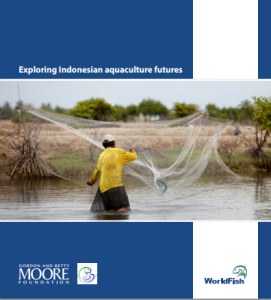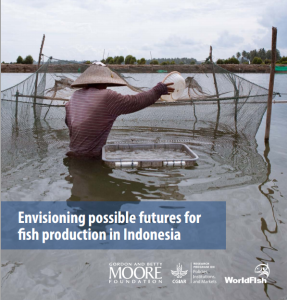By Nhuong Tran (WorldFish), Evgeniya Anisimova (PIM)
Aquacul ture is the fastest-growing food production sector globally, with production projected to double within the next 15–20 years. Future growth of aquaculture is essential to providing sustainable supplies of fish in national, regional and global fish food systems; creating jobs; and maintaining fish at affordable levels for resource-poor consumers. To ensure that the anticipated growth of aquaculture remains both economically and ecologically sustainable, we need to better understand the likely patterns of growth, as well as the opportunities and challenges that these trends present. This knowledge will enable us to better prioritize investments that will help ensure the sustainable development of the sector.
ture is the fastest-growing food production sector globally, with production projected to double within the next 15–20 years. Future growth of aquaculture is essential to providing sustainable supplies of fish in national, regional and global fish food systems; creating jobs; and maintaining fish at affordable levels for resource-poor consumers. To ensure that the anticipated growth of aquaculture remains both economically and ecologically sustainable, we need to better understand the likely patterns of growth, as well as the opportunities and challenges that these trends present. This knowledge will enable us to better prioritize investments that will help ensure the sustainable development of the sector.
In Indonesia, WorldFish and partners have applied a unique methodology to evaluate growth trajectories for aquaculture under various scenarios, as well as the opportunities and challenges these represent. The analysis indicates that aquaculture will overtake capture fisheries as the major source of fish in Indonesia before 2030 and that investment in aquaculture will be essential in order to increase domestic fish supplies and consumption, maintain affordable fish prices for domestic consumers, and sustain the contribution fish makes to Indonesian food and nutritional security.
See more finding on the CGIAR Policies, Institutions and Markets blog here, and read the full report here.
 Envisioning possible futures for fish production in Indonesia
Envisioning possible futures for fish production in Indonesia
In addition, a related report released by WorldFish summarizes the results of a systematic effort to explore possible futures for aquaculture and fisheries in Indonesia. The work described is part of a larger effort that seeks to develop a shared vision for the sectors that 1) aligns public and private investments to foster growth and economic sustainability; 2) reduces environmental impacts and improves efficiency; 3) increases access by small and medium enterprises to the financial and technical assistance necessary to transition to more sustainable practices.
See a summary of the report on the CGIAR Policies, Institutions and Markets blog here, and read the full report here.





